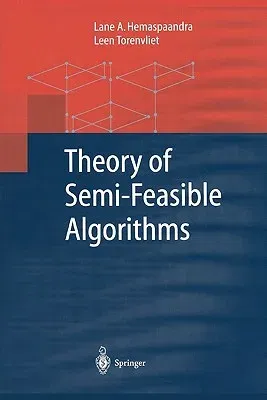Lane A Hemaspaandra
(Author)Theory of Semi-Feasible Algorithms (Softcover Reprint of the Original 1st 2003)Paperback - Softcover Reprint of the Original 1st 2003, 9 December 2010

Qty
1
Turbo
Ships in 2 - 3 days
In Stock
Free Delivery
Cash on Delivery
15 Days
Free Returns
Secure Checkout
Part of Series
Monographs in Theoretical Computer Science. an Eatcs
Part of Series
Monographs in Theoretical Computer Science. an Eatcs Series
Print Length
150 pages
Language
English
Publisher
Springer
Date Published
9 Dec 2010
ISBN-10
3642075819
ISBN-13
9783642075810
Description
Product Details
Book Edition:
Softcover Reprint of the Original 1st 2003
Book Format:
Paperback
Country of Origin:
NL
Date Published:
9 December 2010
Dimensions:
23.39 x
15.6 x
0.86 cm
ISBN-10:
3642075819
ISBN-13:
9783642075810
Language:
English
Location:
Berlin, Heidelberg
Pages:
150
Publisher:
Series:
Weight:
231.33 gm

